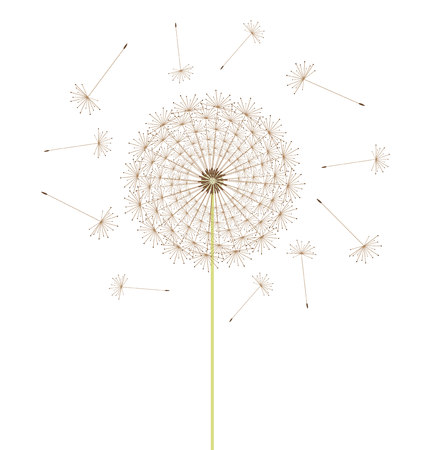1. Introduction: The Humble Dandelion in British Gardens
Once dismissed as a persistent nuisance, the dandelion has long been a familiar sight in British gardens, dotting lawns and hedgerows with its cheery yellow blooms. For generations, this unassuming plant was more likely to be plucked out than prized, labelled simply as a weed by most gardeners across the UK. Yet, beneath its modest exterior lies a rich story of transformation. In recent years, the dandelion’s reputation has blossomed, moving from overlooked intruder to cherished botanical companion. As people increasingly seek natural ways to support their wellbeing, the dandelion’s traditional uses and nutritional benefits have come back into the spotlight. Today, it stands as a symbol of resilience and resourcefulness—a humble wildflower finding new appreciation within Britain’s evolving gardening and wellness culture.
2. A Brief History: Dandelion in British Folklore and Herbal Tradition
Dandelions have long held a unique place in British folklore and herbal tradition, seamlessly blending into the rhythms of country living. While many gardeners today may view this sunny wildflower as an unwelcome guest, our ancestors recognised its value both as a symbol and as a practical remedy.
In centuries past, dandelions were cherished for their resilience and abundance. Rural communities wove the plant into folk tales, often associating it with themes of hope, wishes, and enduring vitality. Children across Britain would blow on dandelion seed heads, counting the puffs to predict the time or to send wishes floating on the breeze—a gentle reminder of nature’s quiet magic.
The herbal use of dandelion has been just as enduring. The plant’s leaves, roots, and flowers all found their way into traditional remedies, handed down through generations. In old English herbals, dandelion was described as an effective tonic for supporting digestion and cleansing the body. It was especially valued in springtime, when fresh greens were scarce and its young leaves provided a welcome source of nourishment.
Dandelion in British Folklore and Country Living
| Folklore Belief | Description |
|---|---|
| Wish-Making | Blowing dandelion clocks to make wishes or predict the time. |
| Symbolism | Associated with resilience, hope, and new beginnings. |
| Weather Prediction | Believed that closed flowers signalled approaching rain. |
Traditional Herbal Uses in Britain
- Dandelion Tea: Made from leaves or roots to support digestion and liver health.
- Salads and Potherbs: Young leaves eaten fresh for vitamins after winter months.
- Tonic Syrups: Roots used in homemade tonics for general well-being.
The humble dandelion thus bridges the gap between folklore charm and practical herbal wisdom—a testament to the way British country life embraces both tradition and nature’s gentle gifts.

3. Nutritional Profile: More Than Just a Weed
Often dismissed as a common garden nuisance, the humble dandelion is in fact a nutritional gem that has been cherished in natural diets for generations across the UK. Each part of the dandelion—the leaves, roots, and flowers—brings its own unique blend of vitamins, minerals, and beneficial plant compounds to the table.
Dandelion Leaves: A Verdant Superfood
The young, tender leaves are particularly rich in vitamin A, vitamin C, and vitamin K, all vital for supporting immune health and bone strength. As a natural source of iron and calcium, these greens can be a valuable addition for those following plant-based or wholefood lifestyles. Dandelion leaves also boast high levels of antioxidants and fibre, making them an excellent choice for anyone looking to enhance their daily nutrition with wild greens.
Roots: Earthy Wellness from Below Ground
Dandelion roots have long been appreciated in traditional British herbalism for their gentle cleansing properties. Packed with inulin—a prebiotic fibre that helps support healthy gut flora—these roots are often enjoyed roasted as a caffeine-free coffee alternative or simmered into nourishing teas. They also offer trace minerals like potassium and magnesium, which are essential for maintaining healthy blood pressure and muscle function.
Flowers: Sunshine on Your Plate
The bright yellow dandelion flowers don’t just add cheer to lawns—they’re edible too! Rich in polyphenols and flavonoids, these blossoms can help combat oxidative stress in the body. Their subtle sweetness makes them ideal for infusing into honey, syrup, or even homemade wine—a nod to age-old countryside traditions across England and Wales.
A Natural Boost for Everyday Diets
Whether enjoyed raw in salads, brewed into herbal teas, or incorporated into rustic kitchen recipes, dandelions offer a wealth of nutrients that make them far more than just a weed. Embracing this wild plant is a simple way to reconnect with nature’s bounty while giving your diet an authentic boost rooted in local tradition.
4. Culinary Delights: Dandelion Recipes from British Kitchens
Across the British Isles, the humble dandelion has found its way from wild hedgerows into the heart of local kitchens, offering a nourishing twist on classic fare. Rooted in a tradition that values seasonality and gentle flavours, dandelions are being rediscovered as both a healthful and sustainable ingredient. Here, we introduce a few wholesome recipes inspired by British culinary heritage, each celebrating the subtle bitterness and natural goodness of this often-overlooked plant.
Dandelion Tea: A Classic Herbal Brew
Dandelion tea is perhaps the most cherished way to enjoy this plant’s benefits. Its earthy notes make it a soothing drink for any time of day. Simply steep freshly picked (and well-washed) dandelion roots or leaves in hot water for 5–10 minutes. Add a slice of lemon or a drizzle of local honey for a refreshing twist that sits perfectly alongside an afternoon scone.
Fresh Dandelion Salad: A Taste of Spring
Embracing the British love for seasonal salads, young dandelion leaves bring a slightly peppery edge to springtime bowls. Pair them with ingredients such as new potatoes, soft-boiled eggs, and flaked smoked mackerel for a nourishing lunch that feels both rustic and refined. A simple vinaigrette made with cider vinegar and wholegrain mustard complements these flavours beautifully.
Popular Dandelion Dishes in Britain
| Dish | Main Ingredients | Season | Serving Suggestion |
|---|---|---|---|
| Dandelion Tea | Dandelion roots or leaves, water | Spring/Autumn | With lemon or honey, as an herbal infusion |
| Dandelion Salad | Dandelion leaves, new potatoes, eggs, smoked fish | Spring | Tossed with vinaigrette; great for light lunches |
| Dandelion Flower Fritters | Dandelion flowers, flour, eggs, oil | Late Spring/Early Summer | Lightly fried and served warm as a snack or starter |
| Dandelion & Apple Chutney | Dandelion petals, apples, onions, spices | Summer/Autumn | As a condiment with cheese or cold meats |
A Gentle Approach to Foraging and Cooking
The revival of dandelions in British kitchens reflects not only a renewed appreciation for natural ingredients but also an ethos of mindful living. Gathering dandelions from pesticide-free meadows or gardens brings us closer to nature’s rhythms. With every cup of tea or forkful of salad, we celebrate both the resourcefulness of traditional British cookery and the gentle nourishment these golden blooms offer throughout the seasons.
5. Herbal Uses and Wellness: Traditional and Modern Applications
Dandelion has long been cherished in British folk traditions as a gentle herbal ally, quietly supporting everyday wellness. Historically, dandelion leaves were gathered in the spring and enjoyed as a nourishing tonic, believed to help cleanse the system after winter’s heaviness. Herbalists have valued every part of the plant—roots, leaves, and flowers—for their unique properties. In contemporary wellness circles, dandelion continues to shine for its versatility and gentle support.
Traditional Remedies with a Gentle Touch
Brits have often turned to dandelion tea as a simple way to encourage healthy digestion and support natural detoxification. The roots are commonly dried and brewed into a warming beverage with a pleasantly earthy taste—a comforting ritual for those seeking balance after indulgence. Dandelion leaf infusions, meanwhile, are favoured for their mild diuretic action, helping to promote fluid balance without harsh effects.
Modern Applications for Everyday Wellbeing
Today, dandelion is finding its place in modern kitchens and wellness routines across the UK. It can be added to green smoothies, sprinkled over salads, or infused in herbal blends. Many local health shops offer dandelion tinctures or capsules for those seeking convenience. Incorporating dandelion into daily life needn’t be complicated—simply steeping a few fresh leaves in hot water creates a soothing cup of tea that brings nature’s benefits indoors.
Practical Tips for Using Dandelion at Home
If you’re new to dandelion, start by adding young leaves to your salads or sandwiches for a subtle bitter note that supports digestion. For a gentle morning lift, try brewing a pot of roasted dandelion root coffee as an alternative to your usual cuppa—it’s naturally caffeine-free and full of earthy character. Always pick dandelions from clean, pesticide-free areas, and consult with your local herbalist or healthcare provider if you’re on medication or have health concerns.
With its time-honoured reputation and modern appeal, dandelion offers a beautiful bridge between tradition and today’s wellbeing trends—a reminder that sometimes the simplest garden plants hold the greatest power for gentle self-care.
6. Foraging and Sustainability: Harvesting Dandelion Responsibly in the UK
For those drawn to dandelion’s herbal virtues, foraging in the British countryside or even your own garden can be a rewarding experience. However, mindful foraging is key to preserving local habitats and supporting biodiversity. Always begin by ensuring you have permission to forage on any land, respecting public parks, nature reserves, and private property.
Know Your Dandelion
Dandelions are widespread throughout the UK, easily recognised by their bright yellow flowers and jagged leaves. When gathering, take only what you need—leaving plenty behind for pollinators such as bees and butterflies, as well as for local wildlife that relies on them as a food source.
Ethical Harvesting Practices
Use a gentle hand when digging up roots or picking leaves and flowers. Avoid stripping an area bare; instead, harvest lightly from different spots to allow the plant population to recover naturally. This approach helps maintain ecological balance and ensures future harvests for everyone.
Promoting Sustainability
Choose areas free from pesticides, herbicides, and heavy traffic pollution. Consider cultivating dandelions at home if you wish to use them regularly—this not only reduces pressure on wild populations but also gives you complete control over growing conditions.
Respect for Nature
Remember that dandelions play a valuable role in natural ecosystems across the UK. By practising thoughtful foraging, you support both your own wellbeing and that of the environment. Enjoy dandelion’s benefits with gratitude, always leaving space for nature to flourish alongside us.


